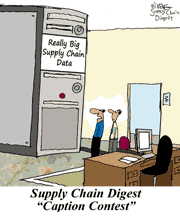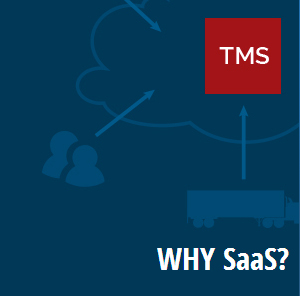 |
June 5, 2014 - Supply Chain Flagship Newsletter |
 |
| THIS WEEK'S SPONSOR: GENPACT |
 |
|
 |
|
||||||||||||||||||||||||||||||||||||||||||||||||||||||||||||||||||||||||||||
Trip Report: Gartner Supply Chain Conference 2014 Part 2
|
|||||||||||||||||||||||||||||||||||||||||||||||||||||||||||||||||||||||||||||
| GILMORE SAYS: |
"PwC said that not only should tax considerations impact supply chain design, but increasing companies will also design supply chains to minimize growing regulatory requirements." WHAT DO YOU SAY? |
I held off on summarizing last week a Wednesday morning keynote from Annette Clayton, SVP of supply chain for power management giant Schneider Electric, in part because I was out of space, in part because it was in a sense paired with an equally interesting breakout session the day before with the company's VP of supply chain planning and SIOP, Francois Martin-Festa.
After a slew of Schneider acquisitions, Clayton came to the company from Dell almost three years ago to begin a supply chain transformation - and it has been a very rapid journey. She took some of the lessons and success from a supply chain segmentation effort at Dell and implemented an even more ambitious effort at Schneider, where the company identified 10 individual buying types/segments across its complex product offering, then four delivery/fulfillment models to which those segments could be mapped.
In a funny anecdote during in Clayton's discussion of all this with Gartner's Jane Barrett, Clayton said when explaining the concepts behind what Schneider calls "tailored supply chains," the reaction of many business unit and country managers was "great, I get my very own supply chain."
Well, not exactly. But it's clear that one of the things that supply chain segmentation does is bring clarity to the supply chain across a vast operation, and clearly link capabilities with specific customer segment needs.
Martin-Festa largely described parallel efforts to bring visibility to Schneider's supply chain, as well as how Sales, Operations and Inventory Planning (SIOP) really has become the key process to drive Schneider's operations.
A couple of things struck me from this presentation. Schneider has something like 100+ different ERP instances running. It decided it was impossible to centralize all that on one platform - so the decision instead was to build visibility and other tools on top of all these ERP systems. In another keynote, 3M's Chris Holmes said his company is going another direction, planning to run all of 3M on one global instance of SAP. Take your pick.
Martin-Festa also said the focus at Schneider was on speed and time-to-value, noting the company was specifically willing to give up some aspects of desired capabilities to get other capabilities faster. That led to a Cloud-based focus, and the rapid developing some home grown tools to solve some immediate needs while packaged solutions were being rolled out. In the end, the two key visibility platforms are from Kinaxis (demand and inventory) and GTNexus (logistics).
Interesting, while truly global Schneider is nominally a French company, Clayton, the company CEO and some other execs all work out of Hong Kong. This is a real trend (see IBM, P&G, others). Schneider is also well on its way to reaching its supply chain goals, with inventory levels in 2013 1.5 percentage points lower versus revenue compared to 2011, and customer satisfaction (think segmentation) up 5.9 percentage points.
Changing gears, as referenced last week, Gartner is really pushing use of its maturity model for demand-driven supply chains, recently adding a sort of middle level so that there are now five stages, the last one being "supply chain orchestrator" that Gartner says few if any companies have yet reached.
With an aggressive effort to engage clients using this and other assessment tools, Gartner is now expanding this concept (first developed by AMR) to sub-elements of the supply chain, such as logistics and procurement.
So, as described at the conference by Greg Aimi, Gartner is just finishing the maturity model for logistics, describing characteristics of logistics processes and capabilities for 10 attributes at each of the five levels of maturity. Hope that makes sense.
The 10 attributes are, by the way: goals and culture, process focus, warehousing, transportation, organization, performance measurement, technology, international logistics, outsourcing, and visibility.
As part of this effort, Gartner has also developed a "hierarchy of metrics" for logistics performance, again as an adjunct to its overall supply chain metric hierarchy. I am not sure whether I agree with the whole hierarchy notion or not, and I am fairly certain I do not believe "forecast accuracy" should be the pre-eminent supply chain measure, which Gartner says it is.
For its logistics metric model, Gartner initially had "delivery to service" expectations as the metric atop the hierarchy - that's seems quite reasonable to me. Then from there are metrics associated with timeliness, quality and cost, etc., as the hierarchy is built out or down, if you will.
But Aimi said Gartner realized that delivery to expectations was dramatically impacted by how accurate a company's plans and forecasts are - e.g., if you didn't make enough stuff to meet demand, fill rates will suffer. So that leads to its pre-eminent logistics metric actually being "supply chain planning accuracy and effectiveness," sitting above "delivery to expectations."
This strikes me as sort of odd, though I understand the thinking. Need to ponder this a bit more. Maybe my friend Aimi can convince me.
A couple of IBM executives led a session on the "customer activated supply chain." Noteworthy was that IBM is now using some 30 "advanced analytics" applications to drive its supply chain, with more to come, though noting it "is just starting down the path here." IBM has found, for example, that advanced analytics can spot looming production quality issues earlier than traditional statistical process control techniques.
Perhaps more importantly, IBM noted that not long ago, its internal measures of supply chain performance might have looked good - yet external, customer focused measures painted a different picture. Now, it says, when decisions have to be made, "the impact on the client comes first" - and that has substantially changed the way IBM runs its supply chains. Worth pondering - do customer metrics really come first in your supply chains?
I had mixed feelings on a supply chain discussion session by a number of consultants from PwC. I was first glad in general to see this, because I believe the supply chain thought leadership overall coming out of the large consultancies of late has not been anything close to what it used to be.
That said, I struggled a bit to find a lot real insight from the discussion, absent comments from the PwC supply chain tax efficiency expert, who made a number of interesting points, although maybe that's because so few of us well understand this topic it all sounds brilliant.
A few good points I did cull from the discussion: with the rapidly changing business world and climate, many companies are operating generally and within the supply chain with "fossilized" organizational structures that are increasingly a disadvantage; one PwC client learned that the cost savings from a plan to dramatically alter the paths for how products are fulfilled globally (including new postponement processes) would actually generate new taxes that would total 10% more than the expected savings (good thing it checked); not only should tax considerations impact supply chain design, but increasing companies will also design supply chains to minimize growing regulatory requirements.
I am out of space. It was a good event. We will be drilling into some of these sessions/concepts in more detail soon.
Any reaction to Gilmore's conference summary part 2? Does supply chain planning effectiveness strike you as the pre-eminent logistics metric? Let us know your thoughts at the Feedback section below.
![]()
| View Web/Printable Version of this Column |
|
|
|
YOUR FEEDBACK
We received a quite a few good letters on our First Thoughts piece on Amazon and Supply Chain Innovation a few weeks ago.
That includes our Feedback of the Week from Thom Moore of Warehouse Optimization, who says most companies believe they are more innovative than they really are. Meanwhile, Bill Alrich says he is not all that impressed with Amazon's innovation.
You'll find those good feedbacks and others letters below.
Feedback of the Week: On Amazon and Supply Chain Innovation
But I think your 50% problem comes into play: 90% of companies think that are in top 10% of innovation. Is it really innovation if there is already a 3 digit acronym for it (like TMS or WMS)? When we introduce the 90% to order optimization - a way to more fully use truck capacity - they have difficulty seeing the very real opportunity. Maybe Amazon and Supply Chain Digest will open a few eyes! Thomas A. Moore |
||
| More on On Amazon and Supply Chain Innovation | ||
Thank you for a great question. Anyone who is willing to implement a new (or innovative) approach in supply chains deserves our gratitude. Success has many fathers. Innovators innovate but without an implementer the innovation may never become real. I love what Amazon is doing. Jeff Bezos deserves a lot of credit and our gratitude for allowing Amazon's decision makers try these innovations and not be driven by greed. FYI: I have no vested relationship with Amazon. Subhash Chowdary |
||
| As always plenty to make me think a little deeper than the norm. Successful innovation is also about timing and hitting the window of opportunity at just the right time. Perhaps some collective dialogue from your readers about how to pick the right time would be useful to all of us who try to innovate whilst not losing touch with the essential basics of good practice. David MacLeod Learn Logistics Limited
|
||
As we sing their praises for supply chain innovation let's not forget the massive tax subsidy that Amazon has enjoyed for 20 years. This NBER study details it: http://papers.nber.org/tmp/51204-w20052.pdf.
I appreciate their thinking but I would still prefer to have a few locally-run stores around. I remember when the neighborhood drugstore would hold packages for pickup by their "regulars." Everything old is new again. Bill Alrich |
SUPPLY CHAIN TRIVIA ANSWER
Q: What percent of total US freight revenue is collected by trucking companies?
A: An amazing 81.2% in 2013, up from 80.7% in 2012, according to new data from the American Trucking Associations, on 69.1% of total tonnage.
| © SupplyChainDigest™ 2003-2013. All Rights Reserved. SupplyChainDigest PO Box 714 Springboro, Ohio 45066 |
POWERED BY: XDIMENSION
|







